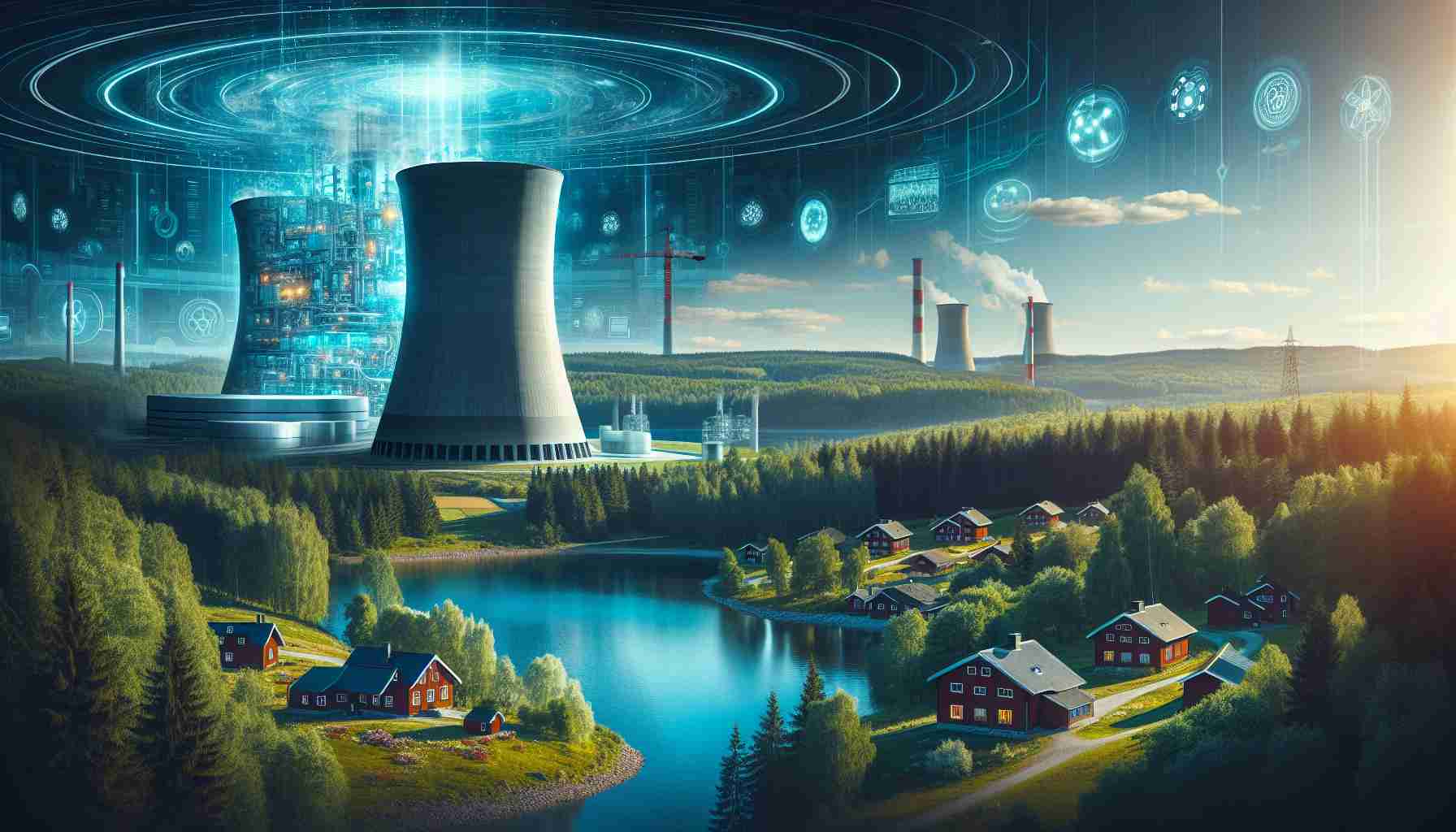## Portable Nuclear Reactors at Hill Air Force Base: A New Power Era
Hill Air Force Base may soon be equipped with a portable nuclear reactor, a development anticipated for as early as 2028, according to Doug Bernauer, the CEO of Radiant Nuclear. The executive shared his belief that Utah ranks high among states that embrace nuclear energy at various levels of government.
Bernauer, who previously worked on advanced projects with Elon Musk at SpaceX, emphasized his motivation to create Radiant Nuclear was driven by the need for timely and cost-effective nuclear solutions. His company has recently made significant strides in both funding and navigating regulatory frameworks, engaging with state officials and representatives from Hill Air Force Base to explore the feasibility of introducing small modular reactors on site.
In the broader context of nuclear advancements, TerraPower recently secured a permit to initiate construction on its innovative Natrium plant in Kemmerer, Wyoming. This marked a historic moment as it was described as the first state permit granted for a commercial-scale advanced nuclear initiative.
Meanwhile, Radiant Nuclear, along with Westinghouse, is competing to finalize designs and conduct tests at Idaho’s National Laboratory in Blackfoot, pending the completion of facility upgrades expected by 2026. The future of clean, sustainable energy at military installations might be closer than ever, promising a transformative impact on energy generation and resilience.
The Future of Portable Nuclear Power: Implications Beyond Military Installations
The anticipated deployment of portable nuclear reactors, such as those planned at Hill Air Force Base, could better inform the way society views nuclear energy. As the United States strives for a decarbonized future, these advancements signify a potential shift towards acceptance of nuclear power as a viable solution for clean energy. Public sentiment towards clean energy technologies is beginning to evolve, driven by climate urgency, energy independence considerations, and advances in waste management technologies.
Economically, portable nuclear reactors could catalyze job creation in manufacturing and energy sectors. The initiative could potentially place the U.S. at the forefront of a burgeoning global market for small modular reactors, generating opportunities through international investments. This technology is particularly beneficial for remote or disaster-prone regions, where reliable energy access can drive local economies and provide essential services efficiently.
Environmental effects of this shift cannot be understated. Compared to coal and natural gas, nuclear energy presents a lower carbon footprint, significantly reducing reliance on fossil fuels. However, this comes with the challenge of ensuring safe waste management and long-term sustainability practices. Moving forward, regulatory frameworks must evolve to address these concerns while supporting innovation.
In conclusion, the strategic implementation of portable nuclear reactors could shape a future of energy resilience and sustainable development, impacting not just military bases, but communities and ecosystems worldwide.
Powering the Future: The Rise of Portable Nuclear Reactors at Hill Air Force Base
Introduction to Portable Nuclear Reactors
The concept of portable nuclear reactors is gaining traction as both military and civilian sectors seek reliable, sustainable energy sources. Hill Air Force Base in Utah is at the forefront of this innovation, with plans to potentially integrate a portable nuclear reactor by 2028. This initiative is spearheaded by Radiant Nuclear, a company founded by Doug Bernauer, an experienced engineer previously associated with SpaceX.
Key Features of Portable Nuclear Reactors
1. Modularity: Portable nuclear reactors are designed to be smaller and modular, allowing for easier deployment and integration into existing infrastructure.
2. Safety Innovations: Enhanced safety measures and passive cooling systems are key attributes, reducing the risk of accidents compared to traditional reactors.
3. Quick Deployment: The portability factor allows for rapid setup in various locations, particularly valuable for military operations or disaster relief.
Advantages of Portable Nuclear Technology
– Sustainability: Provides a clean energy source that reduces carbon emissions, aligning with global sustainability goals.
– Energy Security: Enhances energy independence for military installations and remote areas where traditional power sources may be unreliable or unavailable.
– Cost-Effectiveness: Designed to be more affordable over their lifecycle compared to conventional energy sources by reducing reliance on fuel supply chains.
Market Trends and Insights
As the demand for clean energy grows, the portable nuclear reactor market is predicted to expand significantly. Analysts suggest that by the end of the decade, advancements in regulatory support and technological development could pave the way for more widespread adoption. Key factors influencing this trend include:
– Increasing government support for nuclear energy initiatives.
– Growing concerns about climate change and energy security.
– Technological advancements reducing the cost and complexity of nuclear energy.
Challenges and Limitations
While the prospects are promising, portable nuclear reactors face challenges, including:
– Regulatory Hurdles: Navigating the complex landscape of nuclear regulations will be essential for companies like Radiant Nuclear to ensure compliance and safety.
– Public Perception: Overcoming public fears and misconceptions about nuclear energy remains a significant barrier to acceptance.
– Infrastructure Needs: Existing energy infrastructure may require upgrades to accommodate new technologies, impacting deployment timelines and costs.
Comparisons with Other Renewable Sources
When compared to other renewable energy sources such as wind and solar, portable nuclear reactors offer unique benefits:
– Baseload Power: Unlike solar and wind, which are intermittent, nuclear provides continuous power output.
– Land Use: Nuclear reactors require significantly less land area than solar farms for equivalent energy output, making them suitable for densely populated regions or military bases.
Future Predictions
Looking ahead, the integration of portable nuclear reactors at military sites like Hill Air Force Base may revolutionize energy strategies, contributing to national security and eco-friendly practices. By 2030, innovations in design and technology could further enhance their viability, making them a key player in the global energy transition.
For more insights and developments in nuclear technology, visit [Radiant Nuclear](https://radiantnuclear.com).
The source of the article is from the blog guambia.com.uy



